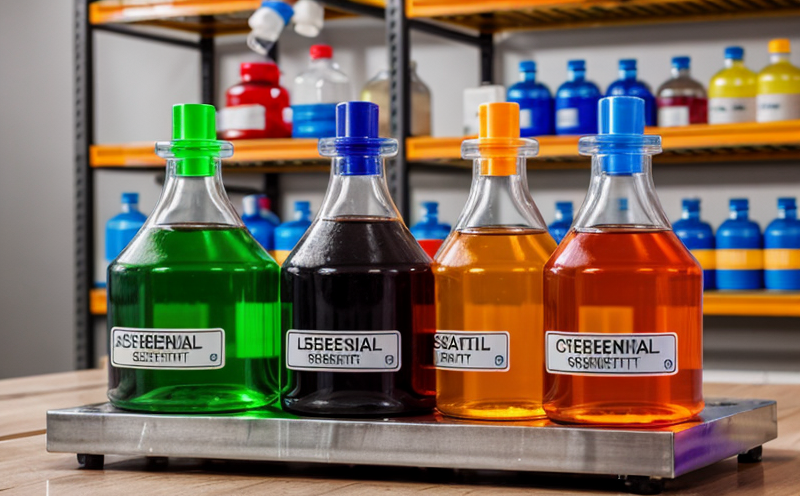Mercury Content Testing in Consumer Products
The testing of mercury content in consumer products is a critical component in ensuring product safety and compliance with international regulations. Mercury, a highly toxic heavy metal, can pose significant health risks when present at elevated levels in various consumer goods, including electronics, toys, cosmetics, and household items. This service involves the precise measurement of mercury compounds within these products to ensure they meet stringent safety standards.
The process begins with thorough sampling and preparation of the product specimens. Depending on the type of material being tested (glass, plastic, metal, etc.), different extraction methods may be employed to isolate the mercury content. Once extracted, the sample undergoes instrumental analysis using techniques such as atomic absorption spectrophotometry (AAS) or inductively coupled plasma mass spectrometry (ICP-MS). These advanced analytical tools provide accurate and reliable quantification of mercury levels.
Compliance with international standards is paramount. ISO 17025-accredited laboratories ensure that all tests adhere to the highest scientific and technical practices. The testing protocols strictly follow guidelines provided by organizations like the European Union (EU) or the United States Environmental Protection Agency (EPA). For instance, Directive 2011/65/EU on the restriction of certain hazardous substances in electrical and electronic equipment (RoHS) imposes limits on mercury content to protect human health and the environment.
Understanding the chemical composition of consumer products is essential for identifying potential sources of mercury. This knowledge helps manufacturers make informed decisions about material selection, formulation adjustments, and process improvements. By adhering to these stringent testing protocols, companies can maintain a competitive edge while safeguarding public welfare.
The importance of this service cannot be overstated. Not only does it contribute to safer consumer products but also supports broader sustainability goals by minimizing environmental impact. Proper disposal of mercury-containing waste prevents contamination of landfills and water bodies, which could lead to long-term ecological damage.
Benefits
The benefits of Mercury Content Testing in Consumer Products are manifold:
- Enhanced Product SafetyEnsures compliance with international safety standards, protecting consumers from harmful exposure to mercury.
- Improved Regulatory ComplianceHelps manufacturers meet stringent regulatory requirements and avoid costly fines or product recalls.
- Enhanced Brand ReputationDemonstrates a commitment to quality, safety, and environmental responsibility, enhancing consumer trust.
- Cost SavingsAvoids potential liabilities and legal disputes, leading to reduced insurance premiums and operational costs.
- Informed Decision-MakingProvides valuable insights into the chemical composition of products, aiding in material selection and process optimization.
- Sustainability ContributionsMinimizes environmental impact by preventing mercury contamination during production and disposal phases.
- Market DifferentiationAllows companies to differentiate their products as environmentally friendly, appealing to eco-conscious consumers.
- Risk MitigationIdentifies and mitigates risks associated with mercury contamination early in the product lifecycle.
International Acceptance and Recognition
The testing of mercury content in consumer products is widely recognized by international bodies. The European Union's RoHS Directive, which restricts the use of hazardous substances in electrical and electronic equipment, sets specific limits on mercury content. Similarly, the United States Environmental Protection Agency (EPA) has established guidelines to regulate the release of mercury into the environment.
Accreditation to ISO 17025 ensures that laboratories adhere to the highest standards of quality management systems for testing and calibration laboratories. This accreditation is a testament to our laboratory's commitment to accuracy, reliability, and consistency in all testing procedures. By adhering to these international regulations and guidelines, we ensure that our clients receive accurate and trustworthy results.
Our expertise extends beyond compliance with legal requirements; we also provide valuable insights into the broader implications of mercury contamination for both human health and the environment. This holistic approach allows us to offer comprehensive support to our clients in navigating the complex landscape of environmental regulations.
Environmental and Sustainability Contributions
The testing of mercury content in consumer products plays a crucial role in promoting sustainability by minimizing environmental impact. Mercury is a persistent pollutant, meaning it can persist in the environment for extended periods without breaking down. Once released into the ecosystem, it can accumulate in food chains, leading to significant ecological and health risks.
By identifying mercury-containing components early in the product lifecycle, manufacturers can take proactive measures to reduce or eliminate these harmful substances. This not only helps comply with environmental regulations but also contributes to broader sustainability goals such as reducing waste, conserving resources, and promoting green chemistry practices.
The use of sustainable materials and processes is increasingly important in today's market. Our testing services support this trend by helping companies make informed decisions about material selection and production methods. By identifying mercury-containing substances early on, manufacturers can design products that are not only safe but also environmentally friendly.
In addition to reducing environmental impact, our testing services contribute to the development of safer consumer products. By ensuring compliance with international regulations, we help protect public health and promote responsible consumption habits. This aligns with broader sustainability goals by encouraging consumers to choose eco-friendly products that are both safe and sustainable.





